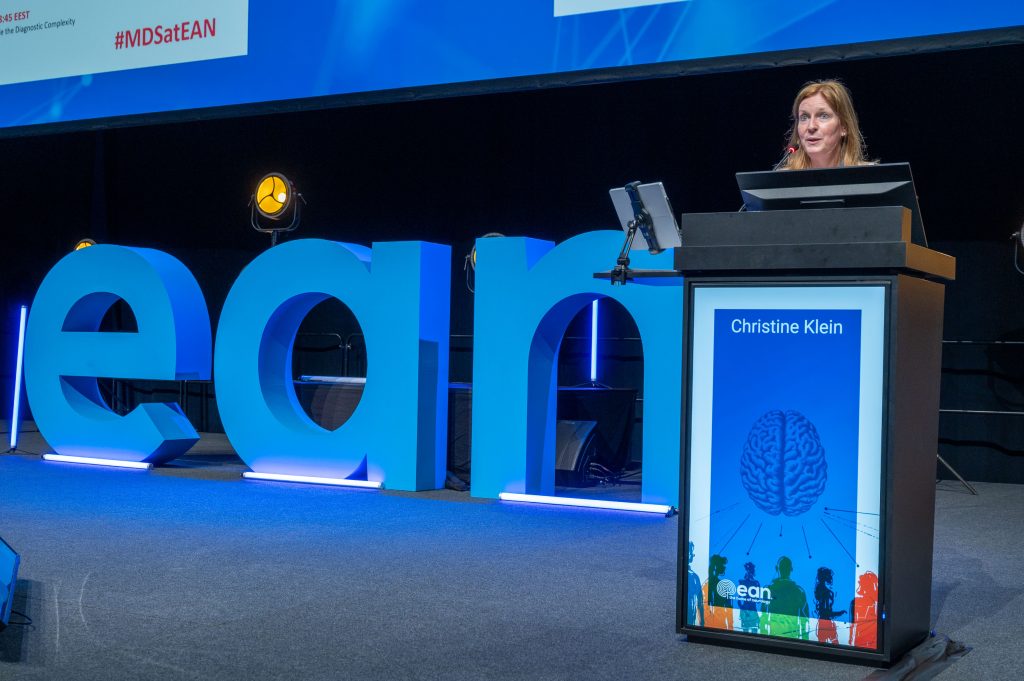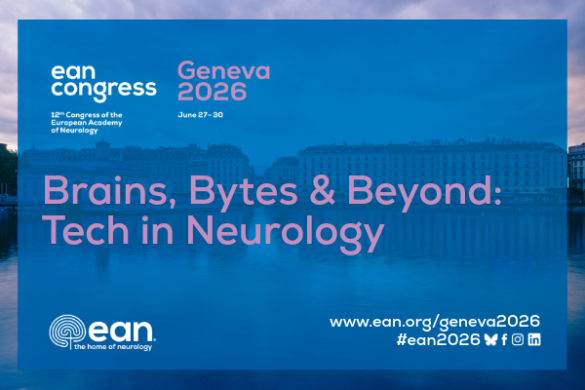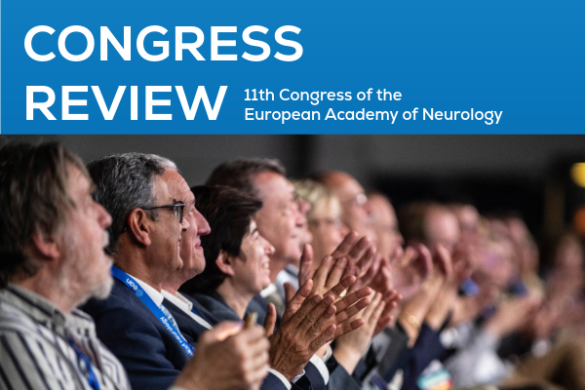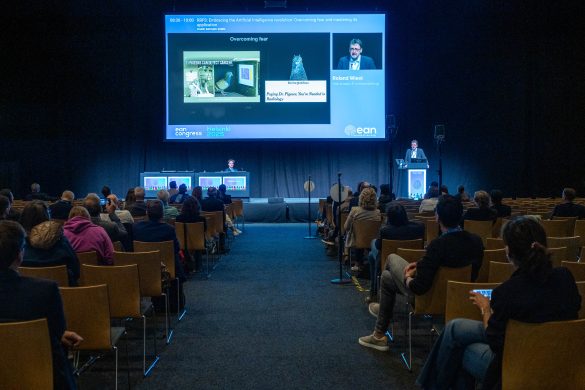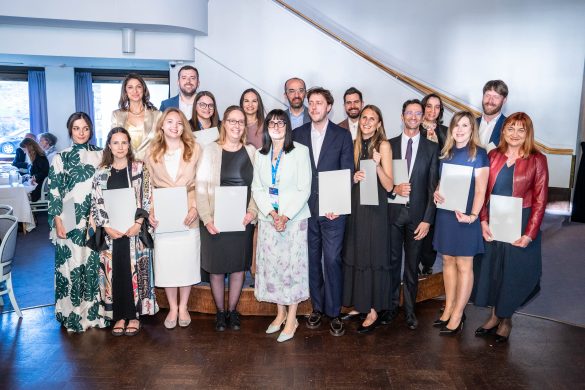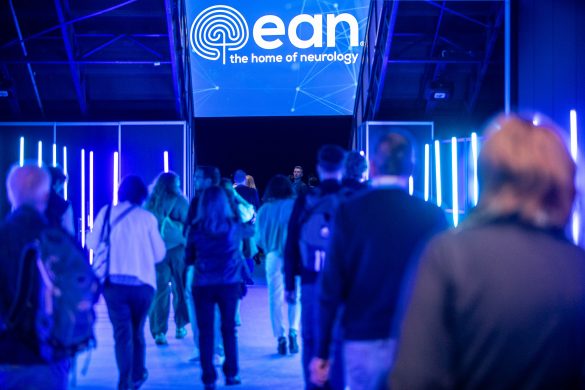by Lukas Gattermeyer-Kell
The popular Basal Ganglia Club reassembled again at EAN 2025 in Helsinki, featuring the C. David Marsden Award Lecture, the Dystonia Europe – David Marsden Award Lecture, and a choice selection of rare and challenging case presentations.
Christine Klein on EAN and MDS-ES Collaboration
Christine Klein, Chair of the Movement Disorders Society-European Section (MDS-ES) and Co-Chair of the EAN Scientific Panel on Movement Disorders, opened the Basal Ganglia Club session by highlighting numerous MDS sessions at the 11th Congress of the European Academy of Neurology (EAN), reflecting the ever-increasing collaboration between the EAN and the MDS. She also gave an overview of upcoming MDS-ES courses, including a special workshop on the complex interplay of genetics, environmental exposures, and epidemiological trends in Parkinson’s Disease (Parkinson’s Disease Decoded, 8-10 May, 2026, Lübeck, Germany).
Missed the session?
Watch it on demand via our Virtual Congress Platform – click here!
C. David Marsden Award Lecture
The session proceeded with the C. David Marsden Award Lecture, held by Dr Enza Maria Valente from Pavia, Italy, evocatively titled Back to the future: The (r)evolution of Parkinson’s disease genetics. Dr Valente not only provided a comprehensive and engaging overview of the history of genetic research in Parkinson’s disease (PD); she also emphasised milestones and lessons from her own career – humorously starting with a curious incident of her chauffeuring Prof. Marsden in her father’s oversized car, masterfully conquering initial parking difficulties.
Dr Valente took the audience on a journey through the history of genetics in PD, starting with Chapter 1: In 1997, the first monogenic form of PD was linked to SNCA. Discoveries of Parkin, PINK1, and DJ-1 followed, opening a window into PD pathophysiology, particularly implicating mitochondrial dysfunction and mitophagy. Chapter 2 was opened in 2004, when low-penetrance but common variants like LRRK2 and GBA1 were found – GBA1 also shifting attention to lysosomal dysfunction. With the advent of genome-wide association studies (GWAS) in 2006, marking Chapter 3 of our journey, many more risk loci emerged, deepening our understanding. Dr Valente highlighted the Global Parkinson’s Genetic Program (GP2) initiative, launched in 2019, exemplifying the global effort and value of collaboration.
Today, genetic discoveries are beginning to benefit patients directly. Insights into genes like GBA1 and LRRK2 have led to genetically informed clinical trials, targeting pathways such as mitochondrial and lysosomal dysfunction. Genetic testing is helping to identify at-risk individuals and guide personalized treatment approaches.
Looking ahead, she emphasised a shift toward predicting disease progression and individual outcomes. For example, GWAS now also explore risk for specific clinical features like cognitive decline or treatment response. Dr Valente familiarised the audience with the 7 pillars of precision medicine, including well-characterised patient cohorts and artificial intelligence, paving the way for a truly personalised care in Parkinson’s disease.
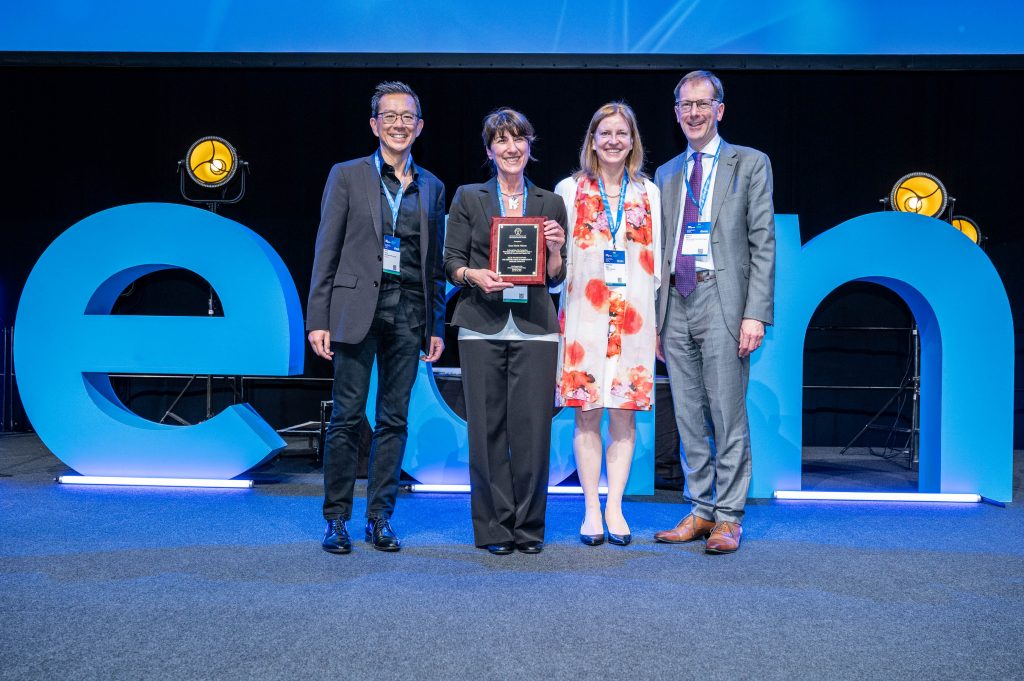
Dystonia Europe – David Marsden Award Lecture
Dr Ahmet Kaymak (Scuola Superiore Sant’Anna) was honoured with the David Marsden Award 2025 for his study Spiking Patterns in the Globus Pallidus Highlight Convergent Neural Dynamics Across Diverse Genetic Dystonia Syndroms.
In his research, Dr Kaymak analysed neural activity in the globus pallidus of 31 patients with genetically defined dystonia during deep brain stimulation (DBS) surgery. Despite different molecular origins, dystonia genes showed overlapping neural firing patterns, particularly in spiking regularity and bursting. These shared dynamics may underlie DBS outcome variability and could inform personalised adaptive DBS strategies.
Clinical Case Presentations
The Basal Ganglia Club session concluded with video presentations of rare and challenging clinical cases, chaired by Iva Stankovic and Alessandro Tessitore:
• Dr Mariana Cabral (Portugal) presented a middle-aged man with slowly progressive gait impairment since adolescence, marked by spastic paraparesis and additional features like urogenital dysfunction. Remarkably, symptoms improved under levodopa therapy, highlighting the broad diagnostic spectrum of the spastic paraparesis plus (SP+) phenotype.
• Dr Ayla Mehdiyeva (Finland) discussed an older woman with subacute cerebellar syndrome who improved impressively after immunotherapy, underlining the manifold differential diagnoses in ataxia syndromes.
• Dr Yara Hassan (UK) shared a case of a middle-aged woman previously diagnosed with multiple sclerosis and epilepsy, later identified with a rare genetic disorder. She highlighted prominent tongue protrusion dystonia as a diagnostic clue.
• Dr Ferdinando Ambrosio (Italy) introduced a man with mild cerebellar ataxia and episodic worsening, stressing the role of cutting-edge genetic testing in episodic ataxia.
These case presentations highlighted both the value of clinical (re-)evaluation and sophisticated diagnostic methods in complex movement disorders, enabling the attendees to optimise their diagnostic abilities and consequently initiate effective treatment in their patients.

